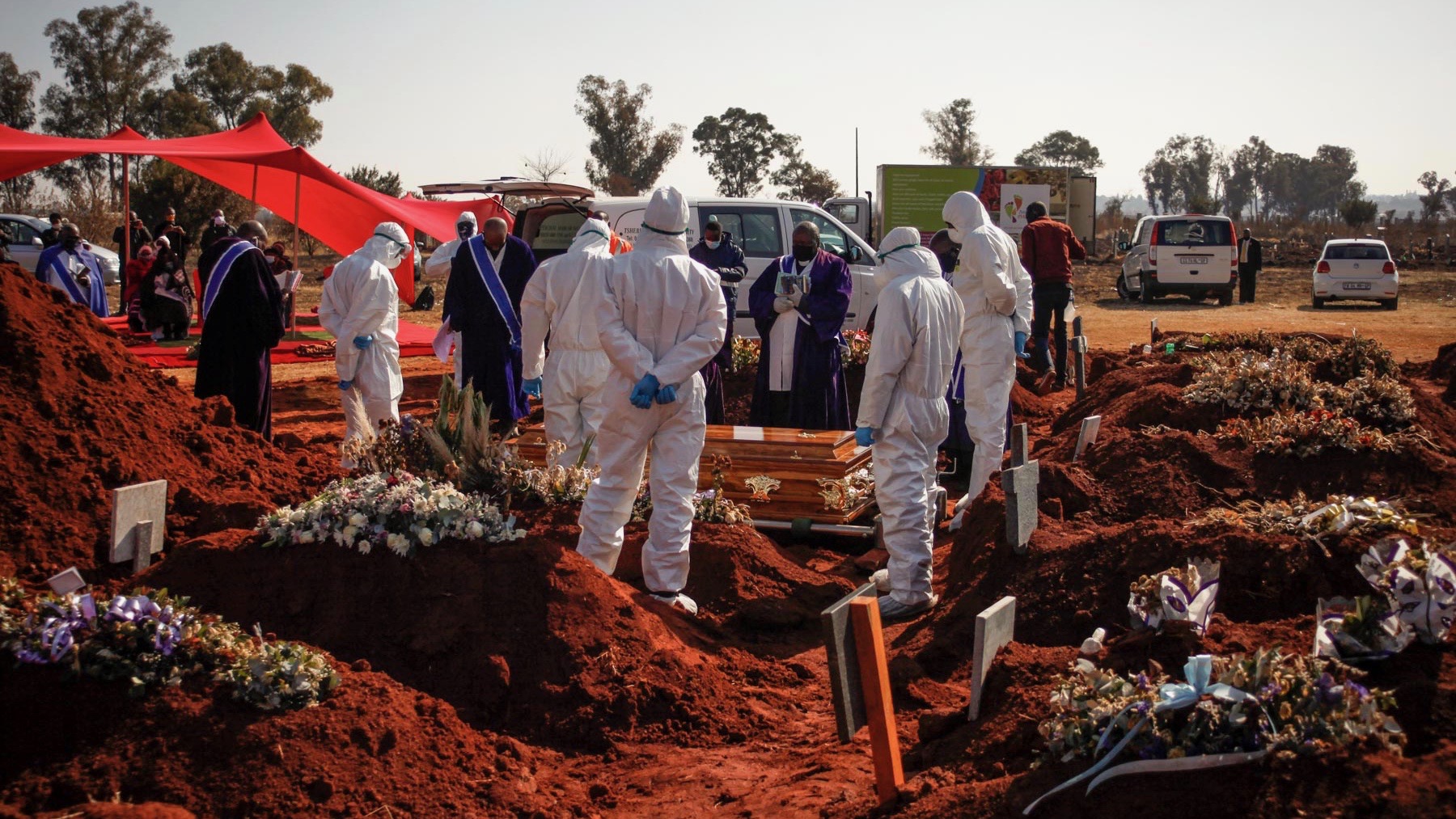Even as South Africa witnesses a sharp spike in its COVID-19 cases, the process of easing the lockdown is being continued by the government. This is despite warnings by numerous unions in different sectors regarding lack of adequate safety preparations necessary to resume economic activity.
According to the latest data released by the country’s health department on June 30, Tuesday, the total number of confirmed cases in South Africa has risen to 151,209. Over 6,945 of these were new cases detected on Tuesday. As per estimates, South Africa has over 37% of the total 405,870 COVID-19 cases recorded on the African continent as on 18:36 of July 1, Wednesday.
A total of 73,543 infected patients have recovered, which amounts to a recovery rate of 48.6%. The death toll stands at 2,657 or 1.8% of all infected patients.
An overwhelming 41.3% of all confirmed cases in the country are concentrated in Western Cape province, which had 62,481 cases as on Tuesday. But, the emerging hotspot with a high infection rate is Gauteng, which till Tuesday had recorded 42,881 cases or 28.4% of all cases in South Africa. Eastern Cape province has the next highest number, with 27,686 or 18.3% of the cases.
These three provinces account for the bulk of the cases in the country, followed by KwaZulu-Natal, where a total of 9,041 people have been tested positive.
Health minister Zweli Mkhize acknowledged in a statement on Sunday that “while every province will unfortunately witness an increase in their numbers, areas where there is high economic activity will experience an exponential rise – beginning with Gauteng (Johannesburg & Pretoria) and Western Cape and followed by Eastern Cape and KwaZulu-Natal Provinces.”
Nevertheless, South Africa is continuing to ease restrictions on economic activity. On the very evening these figures were released, the government permitted restaurants, fast foods, lodges, conference halls and even casinos to resume activities immediately, on the conditions that certain measures be followed.
Mining and manufacturing industries have already been allowed to operate at full capacity since June 1. Schools were also reopened but are to fully resume functioning in a phased manner.
Indicating that the government expects a rise in infections, Mkhize added, “as we had expected, we are approaching a surge during the latter winter months of July and August.”
Are the majority being tested sufficiently?
Many have questioned whether the official figures are providing an accurate picture of the real extent of spread in communities that are unable to afford private healthcare and rely on public hospitals.
Only 35% of the total 1,630,008 tests conducted in the country till Tuesday were carried out in public hospitals. The remaining have been conducted by private hospitals at the cost of R1,200 per patient, in addition to a few more hundreds rands for doctor consultation, which is required to get tested.
The majority of South Africans cannot afford to pay this amount, which exceeds the per capita monthly income of more than 50% of the population. In September 2019, even before the economic shock of COVID-19, 56% South Africans lived on less than R1,230 per month.
The upper-bound poverty line for the year 2019 was drawn at R1,227 per person per month, and R561 per capita per month was estimated to be the minimum amount required to afford the minimum adequate daily energy intake.
In September 2019, about 25% of the population was earning less than R561 per capita per month, according to the Household Affordability Index compiled by the Pietermaritzburg Economic Justice and Dignity Group (PMBEJD).
With the economy deteriorating further throughout the last quarter of 2019 as well as the first quarter of 2020, the unemployment rate in South Africa soared to a 17-year record high of 30.1% by the end of March, when the lockdown began.
Since then, retrenchment notices referred to the Commission for Conciliation, Mediation and Arbitration (CCMA) between April 1 and June 25 are estimated to impact as many as 100,000 workers, Mail & Guardian reported.
Last financial year, about 60% of such notices brought before the CCMA resulted in job-losses. The percentage is likely to be much higher this year, resulting in consequential downward pressure on the wages of those who retain employment.
In the meantime, the cost of the basic food basket rose by 13.7% over the last year. This has thrown a large number of people into debt as they can no longer afford the basic costs of food and other essentials for survival.
Under such circumstances, spending R1,200, along with the doctor’s fee, to get tested for COVID-19 at a private hospital is far beyond the reach of a large majority of South Africans without getting further indebted.
It is also the same majority which is most vulnerable to the disease. Many in this category lack adequate sanitation facilities and are incapable of maintaining appropriate physical distance especially in the overcrowded urban slums.
And yet, 65% of all the tests conducted have been in private hospitals. This raises the question: are these most vulnerable sections of the population, which includes the majority of South Africans, being sufficiently tested for COVID-19? Could the real extent of COVID-19 spread in South Africa be far grimmer than the picture presented by the official figures of the health department?





